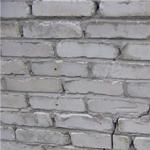In providing fire safety fire extinguishing systems play a major role in the facility. They must work quickly and be trouble-free. In order for them to be in good working order, they must be regularly checked and any problems identified must be corrected. To do this, maintenance of fire extinguishing systems is carried out. It consists of several stages and many events. Each of them is suitable for a specific occasion. In addition, all processes related to fire extinguishing systems are documented.
Basic Rules
Maintenance of fire extinguishing systems (systems and installations) is partially carried out by the owner or tenant of the facility. The head of the enterprise appoints responsible person, and his responsibilities in this area are prescribed in job description. Most of the work on maintenance carried out by a specialized organization. An agreement is concluded with her, where the conditions are spelled out, including the terms of departure to the site in the event of an emergency call.
All work is regulated by document RD 25 964-90. Basic information about service times, technical parameters contained in the operational documents for the fire extinguishing system or its elements. After installing the equipment, a passport for the system is filled out; it also plays a role in checks and their identification.
Types of jobs
The following types of work are distinguished:
- visual inspection;
- preventive work;
- performance check.
An external inspection allows you to determine the condition of fire extinguishing systems from a technical point of view. During such system maintenance, the specialist conducts a visual inspection of all elements, components and assemblies, and may use measuring instruments. Various defects and damage are detected: leaking pipes, rust on metal parts, separation of elements, etc.
Preventative work As part of maintenance, it must be carried out regularly. They involve cleaning pipes, lubricating mechanisms, and removing rust. A specialist must pay attention to faulty equipment and replace it. It is important that the new elements are similar in parameters to the old ones. Prevention helps prevent the occurrence of malfunctions and defects in fire extinguishing systems.
Functionality testing is a set of technical measures aimed at checking the proper functioning of the system. Because modern systems automatic fire extinguishing equipped with electronics, then external inspection, prevention. Functionality testing should cover not only the technological part, but also the electrical and signaling parts.
According to the regularity of the event, they distinguish following types service various systems fire extinguishing:
- planned (according to the approved schedule);
- unscheduled (in case of false alarms, malfunctions).
Visual inspection and performance checks are carried out at least once a month. The timing of maintenance work is established based on information from operational documents and other data from the manufacturer.
Stages of work
The first task is the mandatory search for a contractor with the appropriate credentials and technical base. Inspections are carried out accompanied by a representative of the customer (owner or tenant of the property).
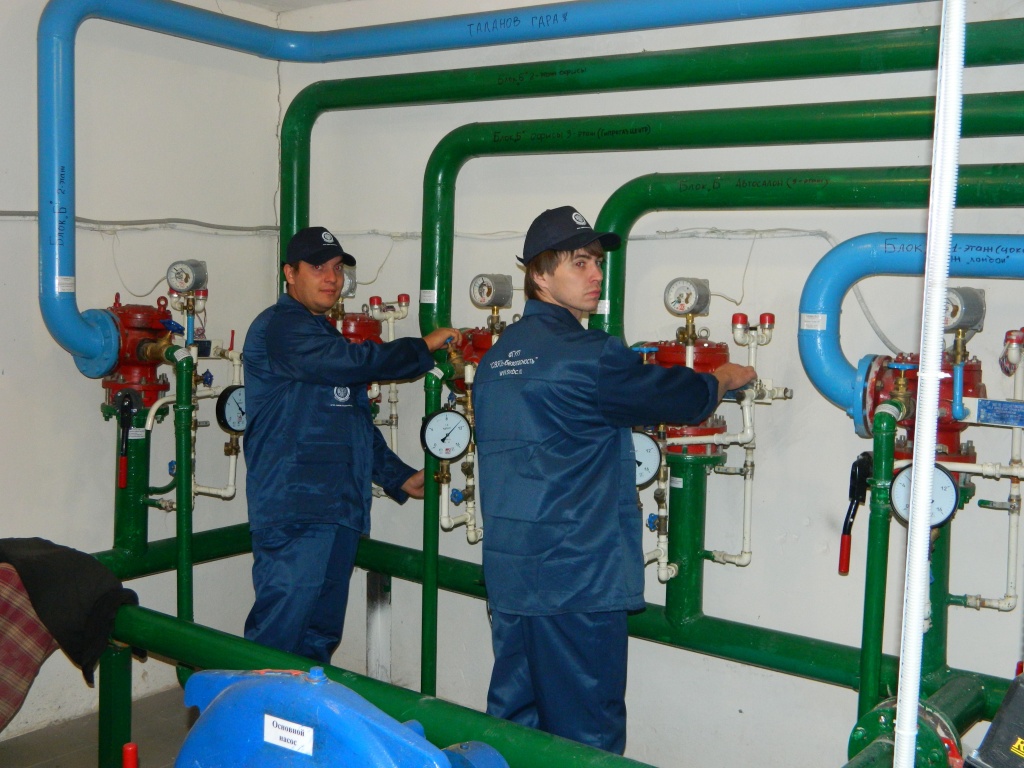
Maintenance of fire extinguishing installations begins with a study of the facility, equipment and documentation. Next, the specialist analyzes the data obtained and begins to inspect the technological part. As a rule, it includes pipelines, measuring instruments and equipment, electrical equipment, shut-off valves. Then the condition and properties of the fire extinguishing agent are checked. A lot of attention is paid to the electrical parts, as well as to alarm systems. They also measure resistance and monitor the performance of all power sources. There are usually two of the latter - main and backup. Preventative work – intermediate and important stage the entire maintenance process.
After inspection and spot check of all elements, it’s time for prevention. At this stage maintenance various installations fire extinguishing is a kind of test. Even after all the necessary measurements and inspections, malfunctions are often detected. Then repairs are possible, eliminating defects and replacing faulty parts.
The service ends with the preparation of documentation of the work performed. At the end, the specialist approves the result with the customer and gives consultations. Sometimes equipment becomes obsolete and needs to be replaced, and questions may arise about other parts of the system. All work and maintenance consultations must comply with regulatory documents.
Features for various equipment
Since the design of fire extinguishing systems largely depends on the type of fire extinguishing agent, servicing water fire extinguishing systems will differ from checking and inspecting the gas version. The specialist must be competent in these matters and know the nuances of the functioning and device of each type.
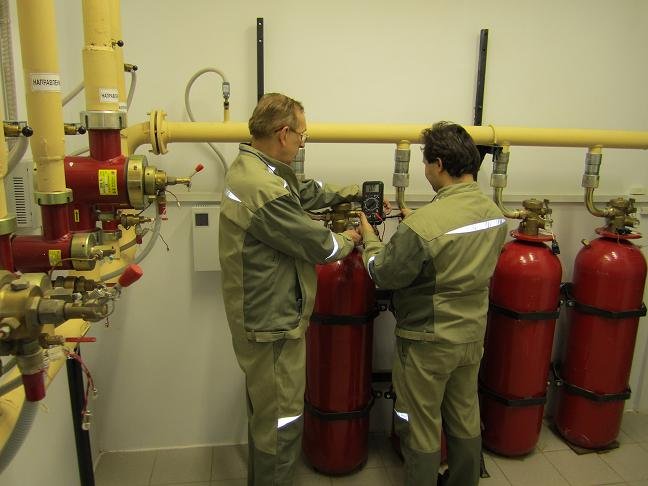
Maintenance of water installations and systems involves regularly determining the water level in the tank. During the maintenance of water fire extinguishing systems and installations, the inspector records data on this in a separate log. If the extinguishing agent level has changed significantly without apparent reason, that is, there is a high probability of detecting a tank or pipeline leak. Check every month pumping station, every 2 weeks you need to run pump equipment. In water fire extinguishing systems, pressure gauges are checked every year for serviceability, and the pneumatic tank is inspected at the same frequency.
For service powder fire extinguishing In addition to standard work, a monthly determination of the pressure in the cylinders is included. The data is compared with the normative ones, as is the quality powder mixture, the inspection periods of which are indicated in the technical documentation. After activating the cylinders with fire extinguishing agent resort to purging the containers with nitrogen for cleaning purposes.
System Maintenance gas fire extinguishing also has its own characteristics. The amount of extinguishing agent is usually determined by weighing. There is another option - pressure control. There is a difference in this process for modular and centralized systems. After activation, gas extinguishing agent and propellant gas are refilled, and failed elements (squibs, modules) are replaced. Maintenance of gas fire extinguishing systems involves inspection to identify seals, module markings, and devices to prevent spontaneous start-up of systems and installations.
Water fire extinguishing is traditional method fire fighting. Other types of fire suppression also have a lot of advantages, but they cannot always be used. For example, when extinguishing a fire in a room with people, you cannot use gas or powder, as these substances can harm their health.
Fighting fires with water is a safe, effective, accessible and cost-effective method. It is used for protection administrative buildings, public institutions, banks, sports grounds, office premises, hotels and enterprises for various purposes.
Water fire extinguishing is carried out using deluge or sprinkler automatic systems or manual installation, which do not lose their relevance.
The main components of water fire extinguishing systems are:
- pumping station;
- pipelines (distribution, suction, pressure);
- sprinklers;
- controls;
- tank with compressor;
- devices for measuring water pressure in a cylinder;
- water tank.
Such installations have quite complex design, therefore, maintenance of all their components should be regular.
Maintenance of water fire extinguishing
State technological equipment Water fire extinguishing installations must be registered in a special log, which can only be kept by the responsible person.
The operating condition and efficiency of all components and devices of the system are checked during a complete audit (once every 3 years). During this work, all components of the installation are inspected, and pressure testing of the pressure pipeline and flushing and pressure testing of distribution pipelines are performed.
Testing of the water fire extinguishing system is also carried out once every three years. In this case, a special program is used, which includes the actual start-up of the installation without stopping the main work. During testing, it is necessary to control the water pressure and the intensity of water supply at the first and last sprinklers.
Our company’s services are not limited to general inspections of water fire extinguishing installations. We are on top level We will carry out maintenance and repair of all components and parts of the system.
The range of work of our company’s specialists also includes:
- Daily check of the water level in the tank with a mandatory note in the log book. If the amount of water has decreased, we will identify the location of the leak and quickly repair the tank.
- Quarterly monitoring of the condition of water pipelines, shut-off valves, measuring instruments and a well. As cold weather approaches, we will insulate the water intake well to prevent the liquid from freezing.
- Monthly inspection of the pumping station with the mandatory removal of dirt and dust from all surfaces of its elements. Inspection of the system includes the quality of tightness of the seals, the level of lubricant in the bearings, and the reliability of all connecting and fastening elements.
Moreover, 2 times a month all fire pumps must be put into operation with registration of the pressure created. If desired value the parameter is not provided, our specialists will determine the cause of the problem and fix it as soon as possible.
Repair and replacement of worn parts is carried out as needed.
- Once every three years - inspection of all engines and pumps and correction of existing problems.
- Monthly check of the condition of controls, gate valves and check valves, pressure control at all stages. Any defects must be corrected immediately.
- Once every three months – inspection of pipelines, during which we note:
- absence or presence of leaks and deflections; tightening level of fasteners; condition of paint on surfaces; required distance between electrical cables and pipes.
- Monthly monitoring of the operation and amount of pollution on sprinklers. Rust or dust on these devices must be removed immediately.
- Daily inspection of the air tank, checking the water level and air pressure. If necessary, we will pump the air to the required level.
- Annual inspection of all system pressure gauges.
Once a week, specialists will start the compressor at idle speed.
A complete inspection of the pneumatic tank is carried out annually. The following events are carried out:
- draining the water and inspecting the tank, removing contaminants;
- checking the safety valve;
- inspection of painted surfaces for coating defects;
- monitoring the condition of the compressor with replacing faulty parts;
- other jobs.
Pneumatic tank pressure meters are inspected monthly, and pipeline pressure meters – once every six months.
Our company is a group of highly qualified professionals who know and love their work. By contacting us for ongoing maintenance of water fire extinguishing systems, you receive affordable and high-quality service.
RD 25.964-90
MAINTENANCE AND REPAIR SYSTEM
AUTOMATIC FIRE FIGHTING UNITS,
SMOKE EXHAUST, SECURITY,
FIRE AND SECURITY FIRE ALARMS
Organization and order of work
Date of introduction1991-01-01
INFORMATION DATA
1. APPROVED by the Ministry of Electrical Engineering and Instrument Making of the USSR
2. AGREED BY GUPO MIA USSR, VNIIPO MIA USSR, VNIIMISP, MNPC "Systemservice"
3. PERFORMERS YU.A. Orlov (topic leader), V.A. Makarov (responsible executive)
4. INSTEAD OST 25950-81 "STOPS. Organization and procedure for carrying out maintenance work"; OST 25951-81 "STOUPS. Acceptance of installations for maintenance. General requirements";
"Instructions for organizing and carrying out regulated technical maintenance of fire extinguishing installations, fire security and fire alarm system", approved by the Ministry of Instrumentation on 06/09/82 and agreed with the USSR Ministry of Internal Affairs on 06/28/82.
5. REFERENCED DOCUMENTS
"Industry integrated time standards for technical maintenance of PA and OPS installations" parts 1, 2, 3;
price list of wholesale prices of the Ministry of Instrument No. 26-05-48;
"Instructions for operation and repair of automated systems fire protection V residential buildings"high-rise".
Approved by the Ministry of Housing and Communal Services of the RSFSR No. 83 dated February 7, 1985 and agreed with the GUPO Ministry of Internal Affairs of the USSR by letter No. 7/1/3597 dated 10/09/84.
Real guidance document(RD) establishes requirements for the organization and procedure for carrying out work on maintenance and repair (hereinafter referred to as M&R) of automatic fire extinguishing, smoke removal, security, fire and security fire alarm systems (hereinafter referred to as installations), carried out on a contractual basis by specialized enterprises and organizations of the country ( hereinafter referred to as the Contractor), with the exception of organizations of the VO "Security" of the Ministry of Internal Affairs of the USSR, at national economic facilities, regardless of their departmental affiliation.
| When carrying out work, comply with fire safety, safety regulations and internal labor regulations in force on the Customer’s territory. 2.6. Primary survey work consists of: Checking the availability of operational, design and acceptance documentation; Checking the compliance of the installation of the vehicle and the installation as a whole with the working design (inspection report); Checking the functionality of the vehicle and the installation as a whole. 2.7. Based on the results of the inspection, a “Certificate of primary inspection of automatic fire extinguishing, smoke removal, security, fire and security-fire alarm systems” () and “Certificate of work performed on the primary inspection of automatic fire extinguishing, smoke removal, security, fire and security-fire alarm systems” () are drawn up. 2.7.1. For an installation that is not operational, a “Defective Statement” () is issued. 2.8. The fact that the Contractor accepts the Customer's installations for maintenance and repair is formalized by a bilateral "Agreement for the maintenance and repair of automatic fire extinguishing, smoke removal, security, fire and security fire alarm systems" in two copies (). 2.9. After concluding the contract, the Contractor must fill out the “Passport for automatic fire extinguishing, smoke removal, security, fire and security fire alarm systems” () and outline in 2 copies: - "Logbook of registration of works for maintenance and repair of automatic fire extinguishing, smoke removal, security, fire and security fire alarm systems" (); - “Schedule of maintenance and repair” (); - "Calculation of the annual cost of maintenance and repair of automatic fire extinguishing, smoke removal, security, fire and security fire alarm systems" (). - "Technical requirements, defining the performance parameters of installations" (). 2.10. The list of vehicles included in the installations and subject to maintenance and repair is given in. 3. Organization and procedure for carrying out maintenance and repair work3. 1. Maintenance and repair work must be carried out within the time limits established by the “Schedule of Maintenance and Repair” agreed with the Customer. 3.2. To eliminate the failure of the equipment's equipment during the inter-regulatory period, the Contractor must arrive at the serviced facility when called by the Customer within the time limits specified in the Contract. These periods should not exceed (excluding weekends and holidays): For g.g. Moscow, Leningrad and the capitals of the union republics - no more than six hours; For other cities and towns - no more than eighteen hours; If the Contractor receives a call from the Customer outside of working hours, the Contractor must arrive at the serviced facility the next day. 3.3. The contractor must immediately leave for the site to eliminate the failure causing material damage (flooding, damage to material assets etc.), as well as to particularly important objects. Before the Contractor arrives, the Customer must take measures to suspend or reduce the effects of factors causing damage. 3.3.1. The Contractor, regardless of the form of the call received from the Customer, must register it in the “Call Log” (). 3.4. Technical inspection of installations is carried out on a commission basis by representatives of the Contractor, the Customer, local authorities of the State Fire Department and, if necessary, with the involvement of representatives of other organizations. This work must be combined by the Contractor with periodic work. 3.4.1. The results of the inspection must be documented in the “Technical Inspection Certificate for automatic fire extinguishing, smoke removal, security, fire and security fire alarm systems” (). Depending on the technical condition of the vehicle and installations as a whole, the commission should give the following recommendations: Write off the installation; Repair or replace individual vehicles; Extend the operation and at the same time set the date for the next inspection. 3.5. All maintenance and repair work carried out, including quality control, must be recorded in the “Maintenance and Repair Work Log”, one copy of which must be kept by the Customer, the other by the Contractor. 3.5.1. Entries in both journals must be identical, executed simultaneously and certified by the signatures of the Contractor’s representative and the Customer’s responsible person. The description of periodic work may be replaced with a link to the maintenance and repair schedule. Entries must end with the text: “The installation(s) was handed over(s) to the Customer in working condition. further exploitation in automatic mode." 3.5.2. The “Maintenance and Repair Work Log” must also record the safety briefing of the Contractor’s personnel by the Customer’s responsible person. 3.5.3. The pages of the magazine must be numbered, laced and sealed by the Contractor and the Customer. 3.6. In the event that the Customer disconnects part or the entire installation due to the repair of protected premises, the presence of defects, the elimination of which is beyond the capabilities of the Contractor, the Contractor temporarily stops maintenance and repair work, which is recorded in the “Maintenance and Repair Work Log” and notifies local authorities GPN. 3.7. Calculations for work performed are carried out on the basis of the “Maintenance and Repair Work Log”. The type of settlement is determined in the special conditions of the contract. 3.8. The time for travel from the Contractor's place of work to the Customer is determined on the basis of actual costs agreed with the trade union committee and approved by order of the head of the enterprise. When calculating the number of the Contractor's service personnel, travel time must be subtracted from the duration of the shift. 3.9. During the term of the agreement, the Contractor and the Customer have the following rights and obligations: 3.9.1. Performer's rights 3.9.1.1. Stop maintenance and repair work if the Customer fails to comply with the terms of the contract or based on the results of a technical inspection of the installations, notifying the local authorities of the State Fire Department. 3.9.1.2. Postpone the deadlines for completing the work as agreed with the Customer. 3.9.2. Responsibilities of the Contractor 3.9.2.1. Carry out maintenance and repair in full within the established time limits. 3.9.3.3. Carry out maintenance and repair by appropriately qualified personnel certified in the “PTE and PTB for the operation of consumer electrical installations” and “Rules for the design and safe operation of pressure vessels” in the presence of the customer. 3.9.2.3. Comply with the internal regulations, safety regulations, and fire safety regulations in force at the Customer. 3.9.2.4. Promptly inform local gas pumping authorities about failures and activations of installations. 3.9.3. Customer's rights 3.9.3.1. Monitor the actual volume and quality of maintenance and repair work performed by the Contractor. 3.9.3.2. Postpone the deadlines for completing the work in agreement with the Contractor. 3.9.3.3. Detain wages due to timely and poor quality performance of work by the Contractor. 3.9.3.4. Submit claims during the warranty period: To manufacturing plants - upon delivery of incomplete, low-quality or non-compliant instruments and equipment; To installation organizations - if poor quality installation is detected. 3.9.4. Responsibilities of the Customer 3.9.4.1. Operate installations in accordance with the “Standard Rules for the Technical Maintenance of Fire Automation Installations.” 3.9.4.2. Accept the Contractor’s work, confirming this with a signature in the “Work Registration Journal”. 3.9.4.3. Issue permission for the Contractor to enter the facility. 3.9.4.4. Provide the Contractor, if necessary, with lifting equipment and means of lifting to heights. 3.9.4.5. Instruct the Contractor on the safety regulations and fire safety regulations in force at the facility, provide him with the means personal protection. 3.9.4.6. Create for the Contractor the necessary conditions for storing spare parts, tools, devices and ensure their safety. 3.9.4.7. Provide the Contractor with the necessary documentation. 3.9.4.8. Promptly inform local authorities of the state gas supply chain and the Contractor about all cases of failures and operation of installations. 3.9.5. Other rights and obligations 3.9.5.1. Additional mutual obligations not specified in this RD must be formalized in the form of “Special Conditions of the Agreement”, which are an integral part of it. 3.9.5.2. If any of the parties fails to fulfill their obligations affecting the timing and quality of maintenance and repair, the guilty party bears responsibility in accordance with the procedure established by law. ANNEX 1 |
Act |
APPENDIX 2
Mandatory
Act |
Conclusions and offers:____________________________________________________________
_________________________________________________________________________________
Executor
____________________________
Position, full name ,signature
"___"_________________19___g
Agreement No. _____ |
TO AGREEMENT No. ________ |
| Installation number | Installation composition | Quantity | Year of issue | Maintenance conditions |
| Number of detectors (sprinklers), |
||||
| installed at height: |
||||
| from 5 to 8 m |
||||
| from 8 to 15 m |
||||
| over 15 m |
||||
| Lifting equipment |
||||
| (lifting and transport vehicles) |
||||
| on electrical safety: |
||||
| Information date: |
||||
Table 3
3. Information about replacements (additions) of the installation
The passport is drawn up
"___"_________________19____
_____________________________
Position of the Contractor, full name, signature
Agreed
"____"________________19____
____________________________
Customer's position, full name, signature
Agreed
"___"_________________19____
____________________________
Position of GPN representative Full name,
APPENDIX 6
Mandatory
First page of the magazine________________________________________________________________________________ Executing Enterprise ________________________________________________________________________________ site, workshop Journal No. _____ | Agreement No. ____ from "___" ___________Calculation of the annual cost of maintenance and repair of automatic fire extinguishing, smoke removal, security, fire and fire alarm systemsInstallation total Total under the contract M.P. Performer | Notes |
3. Comprehensive installation check
Technical requirements
Developed by_______________________________________________________________________________
position, full name, signature, date
Agreed
Executor__________________
_____________________________
position full name, signature
"_____"________________19___
_______________________________
Full name, signature
Agreed
Customer______________________
______________________________
position full name, signature
"_____"_________________19___
_______________________________
Full name, signature
"___"___________________19____g
APPENDIX 10
Information
Scroll |
position, company, surname, initials
_________________________________________________________________________________
drawn up this act in that during the technical examination of the installation
________________________________________________________________________________
________________________________________________________________________________
type of instalation
mounted_______________________________________________________________________________
name of the installation organization, date of commissioning
_________________________________________________________________________________
according to the project_______________________________________________________________________________
name of the organization that completed the project
_________________________________________________________________________________
Project No., release date
Installed:______________________________________________________________________________
characteristics of technical condition
_________________________________________________________________________________
installations, individual vehicles
write off the installation
repair it
extend the operation by setting the date for the next survey).
Members of the commission:________________________________
_______________________________________________
Signature, initials, surname
_______________________________________________
_______________________________________________
5. MAINTENANCE OF WATER INSTALLATIONSFIRE FIGHTING
5.1. Organizational events
5.1.1. Persons responsible for the operation, overhaul and current repairs of process equipment of a fire extinguishing installation are appointed by the head of the energy enterprise, who also approves schedules for technical supervision and repair of equipment.
5.1.2. The person responsible for the constant readiness of the process equipment of a fire extinguishing installation must have a good knowledge of the design principle and operating procedure of this equipment, and also have the following documentation:
Project with changes made during installation and commissioning of the fire extinguishing installation;
- factory passports and operating instructions for equipment and devices;
- this Standard Instruction and local operating instructions for technological equipment;
- acts and protocols for conducting installation and commissioning work, as well as testing the operation of technological equipment;
- schedules for maintenance and repair of process equipment;
"Logbook of maintenance and repair of fire extinguishing installations."
5.1.3. Any deviations from the scheme adopted by the project, replacement of equipment, additional installation of sprinklers or their replacement with sprinklers with a larger nozzle diameter must be previously agreed upon with the design institute - the author of the project.
5.1.4. To control technical condition of the process equipment of the fire extinguishing installation, a “Logbook of maintenance and repair of the fire extinguishing installation” must be kept, which must record the date and time of the inspection, who carried out the inspection, the faults found, their nature and time of their elimination, the time of forced shutdown and activation of the fire extinguishing installation, tests carried out operation of the entire installation or individual equipment. An approximate form of the journal is given in Appendix 4.
At least once a quarter, the chief technical manager of the enterprise must familiarize himself with the contents of the magazine against receipt.
5.1.5. To check the readiness and effectiveness of an automatic water fire extinguishing installation, a complete audit of the technological equipment of this installation must be carried out once every three years.
During the inspection, in addition to the main work, pressure testing of the pressure pipeline is carried out and in two or three directions, washing (or purging) and pressure testing of distribution pipelines (clauses 4.2-4.5) located in the most aggressive environment (dampness, gas contamination, dust) are carried out.
- If deficiencies are discovered, it is necessary to develop measures to ensure their complete elimination in a short time.
- It is recommended to end the inspection by supplying a fire extinguishing agent in one of the directions and, preferably, with the organization of an artificial fire.
5.1.6. Automatic fire extinguishing installations in accordance with the schedule approved by the head of the relevant workshop, but at least once every three years, must be tested (tested) according to a specially developed program with their actual commissioning, provided that this does not entail a shutdown of the process equipment or the entire production process. During testing on the first and last sprinklers, the water pressure and irrigation intensity should be checked.
Testing should be carried out for 1.5-2 minutes with the inclusion of working drainage devices.
Based on the testing results, a report or protocol must be drawn up, and the fact of testing must be registered in the “Logbook of maintenance and repair of the fire extinguishing installation.”
5.1.7. Checking the work automatic installation water fire extinguishing or individual species equipment should be carried out during repair, maintenance of the protected premises and technological installation.
5.1.8. For storing spare equipment, equipment parts, as well as devices, tools, materials, devices necessary for control and organization repair work AUTOMATIC WATER FIRE FIGHTING INSTALLATION, a special room must be allocated.
5.1.9. Technical capabilities of AUTOMATIC WATER FIRE FIGHTING INSTALLATION should be included in operational plan extinguishing a fire at this power plant. During the fire drills it is necessary to expand the circle of personnel who know the purpose and design of the AUTOMATIC WATER FIRE FIGHTING INSTALLATION, as well as the procedure for putting it into operation.
5.1.10. Personnel servicing compressors and pneumatic tanks AUTOMATIC WATER FIRE FIGHTING INSTALLATION must be trained and certified in accordance with the requirements of the Gosgortekhnadzor rules.
5.1.11. The person responsible for the operation of the process equipment of a fire extinguishing installation must organize training with the personnel allocated to control the operation and maintenance of this equipment.
5.1.12. In the premises of the pumping station AUTOMATIC WATER FIRE FIGHTING INSTALLATION the following must be posted: instructions on the procedure for putting pumps into operation and opening shut-off valves, as well as schematic and technological diagrams.
5.2. Technical requirements for automatic water fire extinguishing installation
5.2.1. Entrances to the building (room) of the pumping station and fire extinguishing installation, as well as approaches to pumps, pneumatic tanks, compressors, control units, pressure gauges and other equipment of the fire extinguishing installation, must always be free.
5.2.2. In an operating fire extinguishing installation, the following must be sealed in the operating position: hatches of tanks and containers for storing water supplies;
control units, valves and manual taps;
pressure switch; drain taps.
5.2.3. After the fire extinguishing system has been activated, its functionality must be fully restored within 24 hours.
5.3. Water storage tanks
5.3.1. The water level in the tank must be checked daily and recorded in the “Logbook for maintenance and repair of the fire extinguishing installation.”
If the water level decreases due to evaporation, it is necessary to add water, if there are leaks, determine the location of damage to the tank and eliminate the leaks.
5.3.2. The serviceability of the automatic level gauge in the tank must be checked at least once every three months at positive temperatures, monthly - at negative temperature and immediately in case of doubt about proper work level gauge.
5.3.3. Tanks must be closed to access by unauthorized persons and sealed; the integrity of the seal is checked during the inspection of the equipment, but at least once a quarter.
5.3.4. The water in the tank should not contain mechanical impurities that could clog pipelines, dosing washers and sprinklers.
5.3.5. To prevent water from rotting and blooming, it is recommended to disinfect it with bleach at the rate of 100 g of lime per 1 m of water.
5.3.6. The water in the tank must be replaced annually in the fall. When replacing water, the bottom and inner walls of the tank are cleaned of dirt and build-up, and damaged paint is restored or completely renewed.
5.3.7. Before the onset of frost in buried tanks, the gap between the lower and upper hatch covers must be filled with insulating material.
5.4. Suction line
5.4.1. Once a quarter, the condition of the inputs, shut-off valves, measuring instruments and water intake well is checked.
5.4.2. Before the onset of frost, the fittings in the water intake well must be inspected, repaired if necessary, and the well insulated.
5.5. Pumping station
5.5.1. Before testing the pumps, it is necessary to check: the tightness of the seals; lubricant level in bearing baths; correct tightening of foundation bolts, pump cover nuts and bearings; connections of the pipeline on the suction side and the pumps themselves.
5.5.2. Once a month, pumps and other equipment of the pumping station must be inspected and cleaned of dust and dirt.
5.5.3. Each fire pump must be turned on at least twice a month to create the required pressure, which is recorded in the operational log.
5.5.4. At least once a month, the reliability of transferring all fire pumps to the main and backup power supply should be checked and the results recorded in the operational log.
5.5.5. If there is a special tank for filling pumps with water, the latter must be inspected and painted annually.
5.5.6: Once every three years, pumps and motors in accordance with clause 5.1.5. this Standard instructions, must undergo an audit, during which all existing deficiencies are eliminated.
Repair and replacement of worn parts, checking of seals are carried out as necessary.
5.5.7. The pumping station premises must be kept clean. When not on duty, it must be locked. One of the spare keys must be stored on the control panel, as indicated on the door.
5.6. Pressure and distribution pipelines
5.6.1. Once a quarter you need to check:
absence of leaks and deflections of pipelines;
the presence of a constant slope (at least 0.01 for pipes with a diameter of up to 50 mm and 0.005 for pipes with a diameter of 50 mm or more);
condition of pipeline fastenings;
no contact with electrical wires and cables;
condition of painting, absence of dirt and dust.
Detected deficiencies that may affect the reliability of the installation must be corrected immediately.
5.6.2. The pressure pipeline must be in constant readiness for action, i.e. filled with water and under operating pressure.
5.7. Control units and shut-off valves
5.7.1. For automatic installation of water fire extinguishing transformers and cable structures in shut-off and starting devices should be used steel reinforcement electrified valves with automatic start brands 30s 941nzh; 30s 986nzh; 30s 996nzh with a working pressure of 1.6 MPa, repair valves with manual drive brand 30s 41nzh with a working pressure of 1.6 MPa.
5.7.2. The condition of control units and shut-off valves, the presence of seals, and pressure values before and after control units must be monitored at least once a month.
5.7.3. An inspection must be carried out once every six months electrical diagram activation of the control unit with its automatic activation from the fire detector when the valve is closed.
5.7.4. The installation site of the control unit must be well lit, the inscriptions on the pipelines or special stencils (node number, protected area, type of sprinklers and their quantity) must be made with indelible bright paint and be clearly visible.
5.7.5. All damage to valves, valves and check valves that may affect the reliability of the fire extinguishing installation must be repaired immediately.
5.8. Sprinklers
5.8.1. As water sprinklers for automatic water fire extinguishing of transformers, OPDR-15 sprinklers are used with a working water pressure in front of the sprinklers in the range of 0.2-0.6 MPa; For automatic fire extinguishing of cable structures, DV and DVM sprinklers with a working pressure of 0.2-0.4 MPa are used.
5.8.2. When inspecting the equipment distribution devices, but at least once a month, sprinklers must be inspected and cleaned of dust and dirt. If a malfunction or corrosion is detected, measures must be taken to eliminate it.
5.8.3. When carrying out repair work, sprinklers must be protected from plaster and paint (for example, with polyethylene or paper caps, etc.). Traces of paint and mortar found after repair must be removed.
5.8.5. To replace faulty or damaged sprinklers, a reserve of 10-15% of the total number of installed sprinklers should be created.
5.9. Air tank and compressor
5.9.1. Putting the pneumatic tank into operation must be done in the following sequence:
fill the pneumatic tank with water to approximately 50% of its volume (check the level using the water gauge glass);
turn on the compressor or open the valve on the compressed air pipeline;
raise the pressure in the pneumatic tank to operating pressure (controlled by a pressure gauge), after which the pneumatic tank is connected to the pressure pipeline, creating working pressure in it.
5.9.2. Every day you should carry out an external inspection of the air tank, check the water level and air pressure in the air tank. When the air pressure decreases by 0.05 MPa (relative to the working one), it is pumped up.
Once a week the compressor is tested at idle.
Currently, they are becoming increasingly popular, which are divided according to the principle of their impact on fire. They meet. Each of the above types has both its advantages and tangible disadvantages. Therefore, before the Customer makes his choice, our specialists provide comprehensive information on each of them and select the optimal option for each specific customer in order to increase the efficiency of the system as a whole.
Modern water fire extinguishing systems are complex engineering structures that require regular inspection and maintenance. Maintenance of water fire extinguishing - necessary procedure, helping to maintain the entire system in working order and preventing the occurrence of problems that could affect its efficiency in the future.
Water fire extinguishing service cost
List of maintenance work
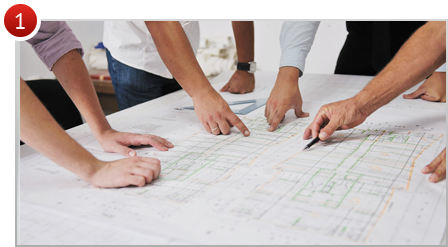
Choosing a specialist
In case of malfunctions, our specialists will quickly eliminate the problems by carrying out routine repairs of the automatic water fire extinguishing system.
Standard maintenance of a water fire extinguishing system includes about 20 manipulations.
During a scheduled check of its performance, specialists carry out a whole range of test activities, from external inspection of the main components to flushing of pipelines, fluid loss tests and comprehensive testing of the entire system as a whole.

Equipment selection
The most optimal and in demand is the water automatic fire extinguishing system. It is divided into two types: deluge and sprinkler.
Regular maintenance of water fire extinguishing systems affects not only its reliability, but also its service life. Timely inspections extend the life of the system to 25 years. In case of neglect service, the service life of the system may be halved. In addition, fixing minor problems is much cheaper than major renovation and especially replacing the entire system.
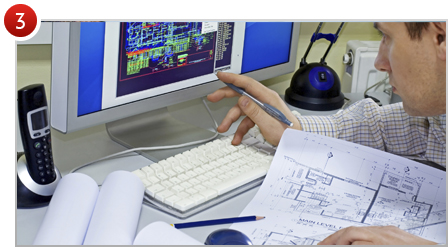
Our guarantees
Mandatory requirement current standards is periodic maintenance and service of the system in order to prevent and prevent malfunctions before activating the fire extinguishing system.
It is advisable that the maintenance of the water fire extinguishing system be carried out by the same company that installed the equipment. The frequency of inspections is established in accordance with the documentation supplied with the equipment and depends on the complexity of the system. Objects through which a large flow of visitors passes are checked at least once a month. In premises not intended for public visits, inspections are carried out at least once a quarter.
For more than 14 years, it has been offering a full range of maintenance services for automatic water sprinkler and deluge fire extinguishing systems. The company's specialists have extensive experience and regularly undergo training in servicing various fire extinguishing systems.
Our objects
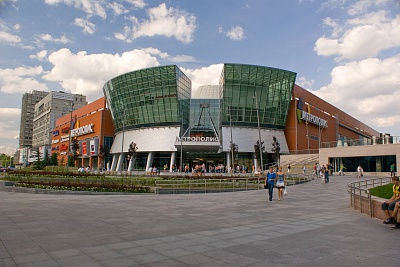 |  |


